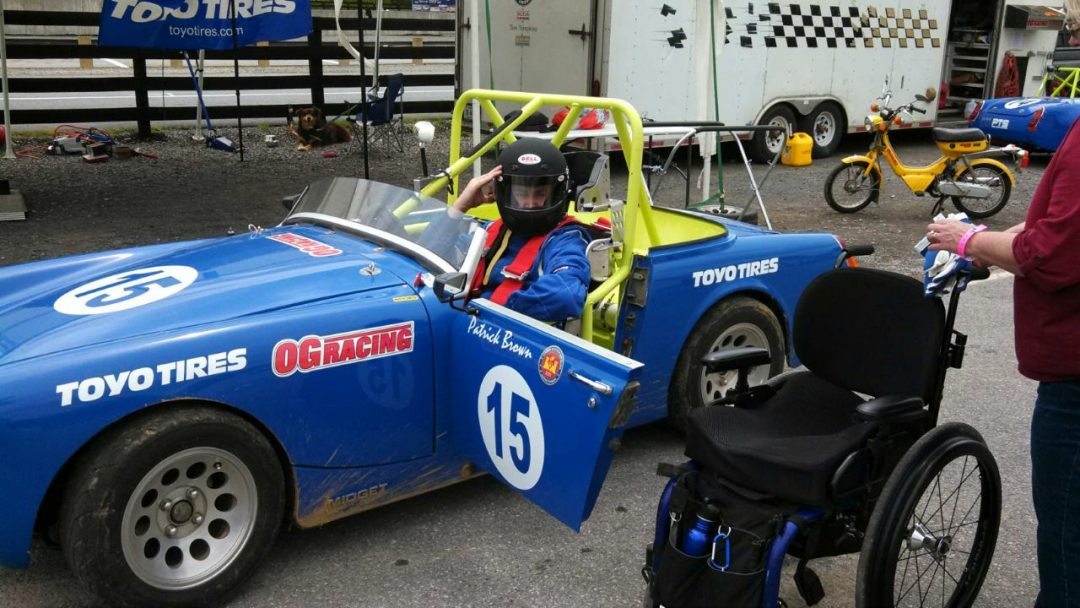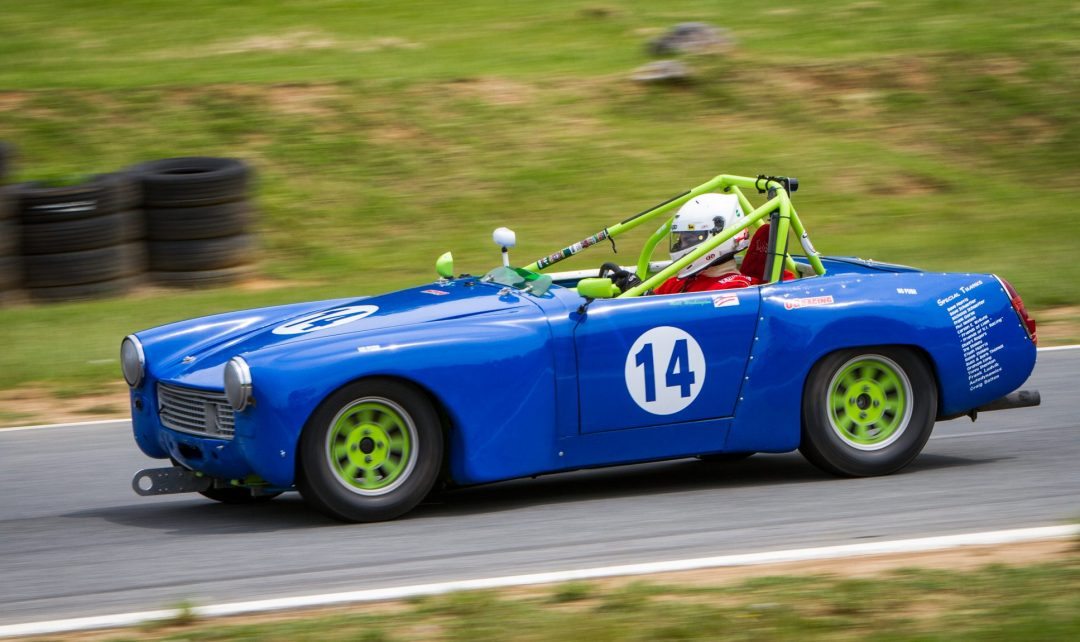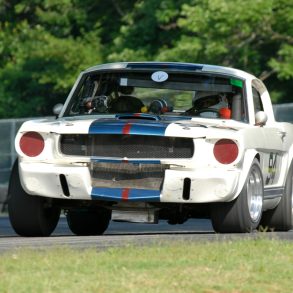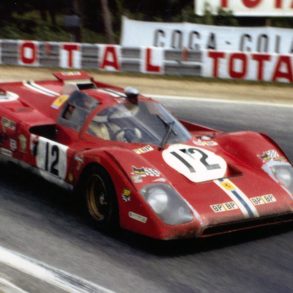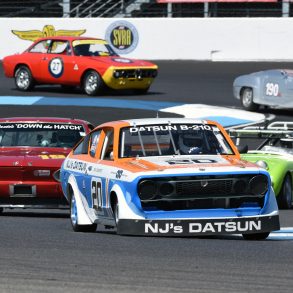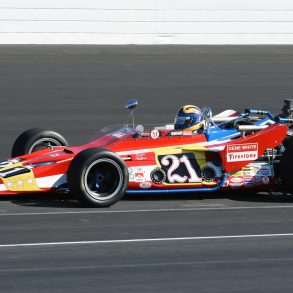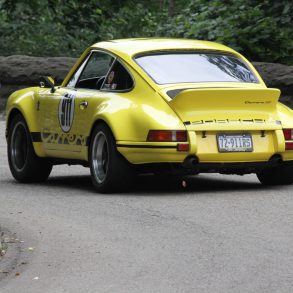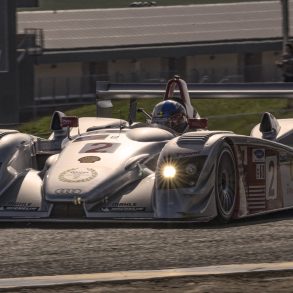High Performance Heroes is a group of racers, race fans and friends dedicated to helping our heroes—combat wounded veterans—work toward their motorsports goals.
We have pledged our time, talents, and resources to provide entry-level exposure to wheel-to-wheel vintage road racing. In order to accomplish this goal we—along with the generous support of the motorsports industry, development staff and racing fans—modify and develop vintage, small-bore racing cars to meet the specific needs of each of our veteran drivers.
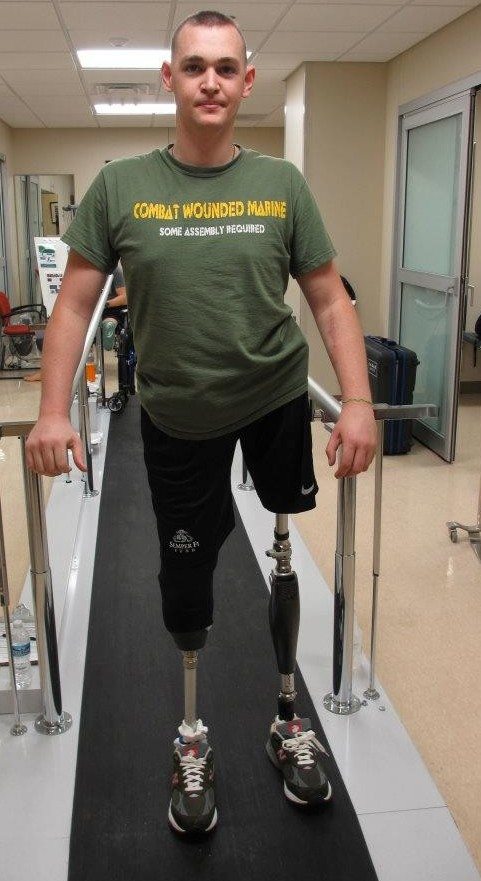
I was able to solicit support from my family and friends, as well as personally providing all mechanical parts and a significant portion of the funding required to begin the process of reviving a tired, old racing car, which had been put out to pasture a decade earlier, after a front-end shunt, by its previous owner.
Matt Washington was responsible for the initial tear-down and evaluation of the chassis. It was determined that repairs would have to be made to the front frame extensions and right side fender, but otherwise the car appeared to be a solid restoration candidate.

After many, many long nights the racecar was finally fired up for preliminary tuning in late April of 2012.
On several occasions I traveled to Bethesda, Maryland to meet with Sgt. Dwyer, brief him on the car’s status and personally observe his rehabilitation progress, in order to correctly engineer driver input solutions for the racing car.
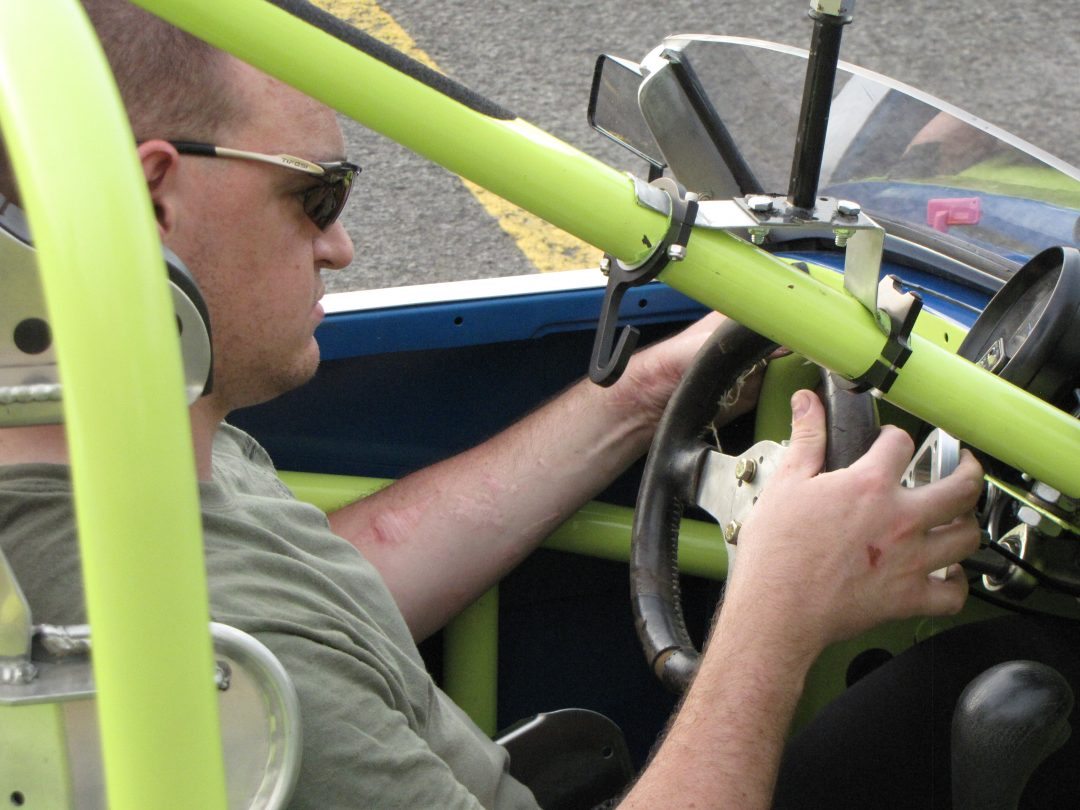
The racing car was entered in both the 2012 Beaver Run Vintage Race and the Pittsburgh Vintage Grand Prix, held the following weekend. The car sustained some relatively minor engine damage, as a result of Sgt. Dwyer’s unfamiliarity with the car, at Beaver Run. This was anticipated and an occurrence for which we had budgeted. The car was repaired during the intervening week and both car and driver performed well at the PVGP. At that time, several individuals inquired about the possibility of make tax-deductible contributions. Those people close to the project began to see that rather than a one-off project, fading away as Sgt. Dwyer progressed on to higher motorsports goals, perhaps the project could become an on-going effort to provide an opportunity to aide combat-wounded veterans in achieving not just their motorsports goals, but as a stepping-stone to allow other service personnel to reach all manner of personal goals. Toward that end, we tasked Sgt. Dwyer with identifying, from the pool of wounded veterans at the Walter Reed Medical Center (where he is stationed as part of the Wounded Warrior Battalion during his recovery and rehabilitation) other combat-wounded service personnel, interested in being part of our project.
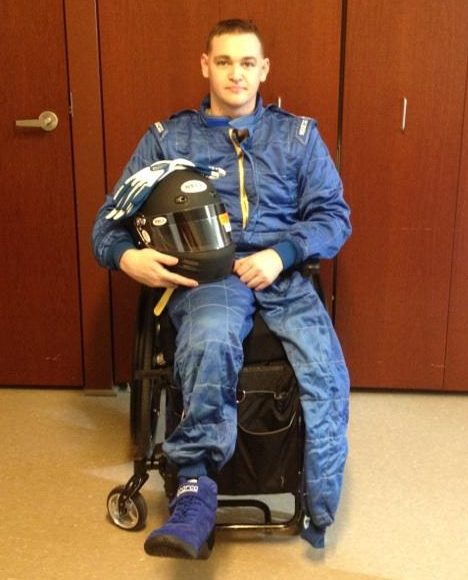
In October of 2012, Sgt. Dwyer successfully competed in his third and final “Rookie” event held at the Virginia International Raceway, both he and the racing car performed commendably. Cpl. Brown and his mother were able to attend the race as guests of the team.
During the winter, the racing car, now garaged in Belington West Virginia, was extensively reviewed for safety issues. Many performance up-grades were undertaken, it being the general opinion that Sgt. Dwyer’s skill level had risen to a point that warranted such improvements.
In early December of 2012, the decision was made to apply for 501(c) 3 status in order to take advantage of several contribution offers.
In late January 2013 I was able to secure the donation of a parts car and purchased a chassis suitable for development into a racing car designed to meet Cpl. Brown’s unique physical requirements. We began almost immediately designing a roll-over structure appropriate for this application. That roll cage was fabricated and installed at the end of January.
In March and April 2013, I made several trips to Walter Reed Hospital to meet with Cpl. Brown and gauge his progress. Unfortunately, he has undergone several set-backs. We are still committed to seeing Patrick in a racing car as soon as possible but are currently seeking interim drivers. Liam will continue to be a part of the project for the foreseeable future.
In mid-May the racing car, now designated #15, slated for use by Patrick Brown was converted to “roller” status. Additional engineering was undertaken to solve several of the hand-control issues that will be required to be completed before the car can be safely driven by Patrick.
In late July Liam was entered in the 2013 Pittsburgh Vintage Grand Prix. Although the #14 car suffered a broken left rear axle and a failed starter, both were quickly and expertly repaired, allowing Liam to put on a text book drive from mid-pack and finish as the winner of the Group 3 Division. It was a great win for the entire team.
In early September 2013, Sargent Liam Dwyer was promoted to Staff Sargent.
In late September Liam was entered in the SVRA Gold Cup, held at VIR, Liam again placed well up in the Group standings and the #14 ran well in its final HPH race of the season.
Currently, Staff Sargent Dwyer has moved on to a professional drive with Freedom Autosport, driving a Spec Miata in the Continental Tire Series. High Performance Heroes is very pleased to have proved Liam his initial exposure to wheel-to-wheel racing and some of his current sponsors. We wish him the best of luck in his future racing.
Patrick Brown has retired from the Marine Corps with the rank of Sargent and has been receiving personalized coaching from Vintage Racer Group member Paul Bova. Patrick has been taking advantage of various local Autocross events, in order to gain seat-time prior to the upcoming Competition Driver’s License school held in May at Summit Point Raceway
Editor’s Note: Anyone wishing to support the High Performance Heroes (HPH) program or know of a veteran that this program would benefit, are strongly encouraged to contact David Thomas at 804-586-8092 or by email at [email protected]


